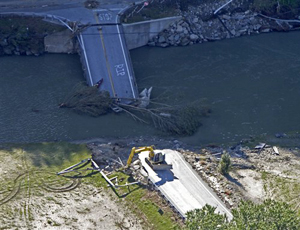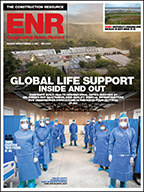
In areas of the Northeast where infrastructure damage from Hurricane Irene was relatively minor, bridge engineers saw the storm—as well as the previous week’s 5.8 magnitude earthquake affecting the same area—as a dress rehearsal for future potential catastrophic events.
Pennoni Associates, engineer-of-record and program manager for Pennsylvania’s Burlington County Bridge Commission, had installed sensors in 2007 on two moveable bridges—one, a 500-ft lift span and the other, a 280-ft-long bascule span with a 500-ft arch.
Spurred by the Minneapolis bridge collapse, the commission wanted to start monitoring the two 70+-year-old landmark crossings over the Delaware River, says Frank Moon, principal engineer with Pennoni. The sensors send live streaming data to a portal, where engineers analyze it for decisionmaking. If either event had caused severe enough stresses, an alarm would be triggered.
The earthquake created stresses that equaled only the equivalent of one heavy truck, while Irene caused strains equal to two, says Nathaniel Dubbs, Pennoni graduate engineer. “Building upon this technology is an ongoing process,” adds David S. Lowdermilk, Pennoni’s regional vice president for transportation. “We can assess any damage immediately after a quake or hurricane, and could immediately plan for any type of retrofit required, or close the bridge.”
In New York City, monitoring and interpreting the data sent from sensors on three major bridges also provided engineers a “dry run” for future serious events, says Ted Zoli, national director of long-span bridges for HNTB Corp. But the extensive flooding damage to bridges in Vermont underscore the fact that “we don’t have an extensive database of why bridges fail,” he adds.
Noting the Mississippi River flooding of 1993, he says that there are no design standards in place for scenarios in which bridges are overtopped by water and carried away, although there are for scour, coastal flooding and storm surges.
“We design for high water levels, but not for above those levels,” he says. “We have limited [assets]. When these are damaged, we need to learn from them and be opportunistic about learning from failures. The damaged bridges in Vermont would be a good opportunity.”




















Post a comment to this article
Report Abusive Comment